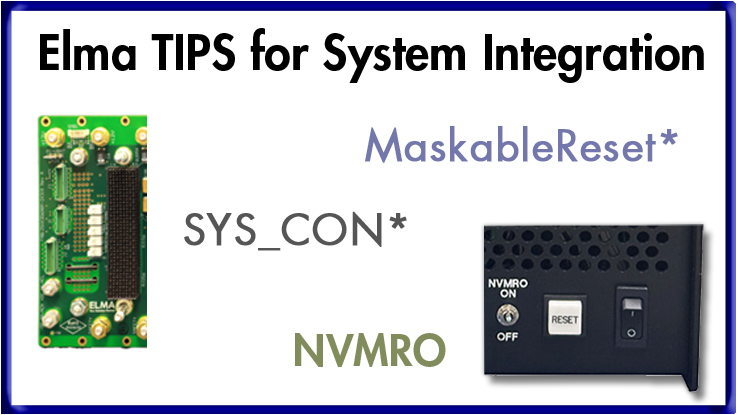At Elma, we answer tons of customers’ pre-sales questions as well as ones during design phases, preliminary design reviews, and critical design reviews, not to mention post-sales questions for both standard and custom products. When the same questions keep coming up, we know it's something customers want to hear about.
One of the Questions We Keep Getting
This Elma TIP talks about the Geographical Address (GA) signals for VPX system integration. In the earlier days of VPX, these were rarely used, but with a significant rise in the use of Chassis Managers, Geographical Addressing now plays an important role in newer systems.
Geographic Address Field

VITA 65 requires that VPX backplane profiles comply with GA Field assignments and function as defined in VITA 46. There are six pins in the VPX J0 connector associated with this: GA[4:0]* and GAP. Backplanes are required to either tie each to ground with a maximum resistance of 1.0 Ohm or left open. GA0* is the least significant bit, GA4* is the most significant bit, and GAP* is a parity bit as the sum of the number of grounded GA pins needs to be odd.
Not all plug-in-cards use GA, but backplanes must have it in case it is needed. It should also be noted that rear transition modules can make use of these GA signals. A connection to ground is a logic 1 and an open connection is a logic 0. Table 7-1, taken from VITA 46.0 and seen at right, depicts this architecture.
We are seeing more and more customers utilizing chassis management per VITA 46.11 and there is a lot more information on addressing in VITA 46.11. This increased usage is heavily driven by SOSA applications. To meet this need of our users, Elma not only includes GA in all of our backplanes, but we also include a lot of VITA 46.11 compliant chassis managers in the chassis and systems we build for customers, as well as selling chassis manager cards à la carte.
VITA 46.11 is based on IPMI communication with plug-in cards. There are two IPMI buses (IPMB-A and IPMB-B) routed within a backplane among the slots and often also to additional I/O connectors. IPMB-A uses backplane signals SM0 (clock) and SM1 (data) and IPMB-B uses backplane signals SM2 (clock) and SM3 (data). Table 7-3 below, also taken from VITA 46.0, depicts the backplane pin assignments for the GA and SM signals.
The chassis manager connects to the two IPMBs, and plug-in-cards and power supplies can also plug into these IPMBs. Each device on an IPMB must have its own unique GA, as this provides the means for sent messages to get to the correct destination.
This sounds simple enough, but let’s put a spin on things!

What do you do when you have one chassis manager connected to multiple backplanes?
As noted, each slot needs a unique GA. To make sure two or more backplanes sitting side-by-side in a chassis don’t use the same Gas, some thought is required. Ensuring backplanes have provisions to change the GA on each slot if needed is extremely helpful. Some backplane designs include jumpers, others have zero-ohm resistors removed and/or installed. We have even designed some backplanes that include DIP switches to allow easy reconfiguration.
The Bottom Line
Geographical Addressing has been in use for decades, even going back to VME and CompactPCI. However, many systems didn’t actually put it to use. But times are changing, so be sure to get familiar with GA…there’s a good chance you will be using it.
Need Help?
For nearly 40 years, Elma Electronic has been providing industry with high-quality embedded computing products, everything from extrusions and card guides to backplanes, chassis, boards, and integrated systems. We've been extremely successful thanks to our customers, and not just because they buy from us. It's because our customers ask us questions and tell us things. We're all continuously learning how to do things better.
Got questions about GA signals or other VPX integration challenges? Give us a call. We've probably helped a customer with your specific issue or a similar one, and we're here to help you get it sorted out.

